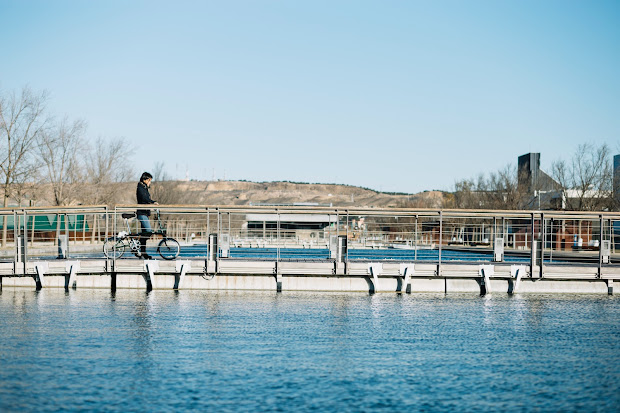A Comprehensive Guide to CIP Cleaning Process, Installation, and Commissioning
In the world of manufacturing, especially within the food, beverage, pharmaceutical, and cosmetic industries, cleanliness and hygiene are paramount. Contamination and residues in production systems can lead to product recalls, quality issues, and even health hazards. To address these concerns, the Cleaning-In-Place (CIP) system has emerged as a critical solution, providing a method for cleaning equipment without the need for disassembly. This blog delves into the CIP cleaning process, as well as its installation and commissioning, ensuring efficient and effective operations.
What is CIP Cleaning?
CIP (Cleaning-In-Place)
is an automated cleaning process that allows the cleaning of internal surfaces
of pipes, vessels, tanks, and other equipment used in the manufacturing
process, without the need to dismantle or manually clean these components. This
process involves circulating cleaning solutions through the system to remove
product residues, bacteria, biofilms, and other contaminants. By eliminating
the need for manual labor and the disassembly of equipment, CIP offers both
time and cost savings.
The CIP Cleaning Process
The CIP cleaning process
typically follows a series of sequential steps:
Pre-Rinse:
The first stage involves flushing the system with warm water to remove any
loose debris, product residues, or contaminants. The water temperature can vary
depending on the product or residue being cleaned.
Cleaning Solution
Circulation: A cleaning solution, often an alkaline or
acidic detergent, is circulated through the system to break down fats,
proteins, and other residues. Alkaline detergents are commonly used to remove
organic materials, while acidic solutions are employed for scaling, mineral
buildup, or specific residue types.
Rinsing:
After the cleaning solution is circulated, a rinse with clean water is carried
out to remove any leftover detergent or cleaning agents, ensuring no chemical
residue remains on the surfaces.
Sanitizing/Disinfection:
A sanitizing agent, typically an alcohol or chlorine-based solution, is used in
the final rinse cycle to eliminate any microbial contaminants, ensuring the
system is sterile before the next production batch.
Final Rinse:
A final water rinse ensures that all sanitizing agents and cleaning solutions
are completely removed from the system, leaving the equipment free from any
contaminants and ready for use.
Installation of CIP
System
Installing a CIP system
involves setting up a network of piping, tanks, pumps, and control systems to
facilitate the cleaning process. The components should be designed to withstand
the pressures, temperatures, and chemicals used during cleaning.
Steps for Installation:
Design and Planning:
Before installation, a detailed design of the CIP system must be created,
ensuring it is tailored to the specific needs of the facility. This includes
determining the layout of the system, flow rates, and chemical requirements.
Proper piping and connections are vital to ensuring the cleaning solution is
efficiently circulated.
Piping and Equipment
Setup: The system should be installed with durable,
easy-to-clean materials such as stainless steel. Piping should be arranged for
easy access, with the ability to isolate sections of the system when necessary.
Spray nozzles, valves, and filters should also be installed to ensure optimal
cleaning performance.
Control System: A
key component of the CIP system is its control panel, which automates the
cleaning cycles. The control system should be designed to manage the cleaning
parameters, including time, temperature, and chemical concentration. It should
also include fail-safes to monitor for issues during the cleaning cycle.
Integration:
The CIP system must be integrated with the facility’s other processes, such as
production lines and water supply systems. This ensures the seamless flow of
cleaning agents, water, and waste products.
Commissioning the CIP
System
Once the CIP system is
installed, it must be commissioned to ensure that it operates correctly and
meets the required standards for cleanliness and efficiency.
Key Steps in
Commissioning:
System Testing:
Before full-scale operation, the system is tested with water to check for any
leaks, pressure drops, or malfunctions. This testing phase helps ensure the
integrity of the piping, pumps, and other components.
Performance Validation:
The CIP system should be validated by performing a series of cleaning cycles
under controlled conditions. This includes checking parameters such as
temperature, flow rate, pressure, and chemical concentrations. The
effectiveness of cleaning should also be evaluated by swabbing surfaces to
detect residues or contaminants.
Adjustments and
Fine-Tuning: If any issues are identified during the
testing or validation phases, adjustments may need to be made to the system.
This could involve recalibrating equipment, altering flow rates, or fine-tuning
chemical concentrations.
Operator Training:
Proper operator training is crucial to ensure that the CIP system is used
efficiently. Operators should understand the cleaning procedures, safety
precautions, and troubleshooting techniques.
Final Approval:
Once the system has been tested, validated, and any necessary adjustments have
been made, the CIP system is ready for full-scale use. It should be
continuously monitored and maintained to ensure its effectiveness over time.
Conclusion
The CIP cleaning process,
along with its careful installation and commissioning, is an essential
component of any modern manufacturing operation that prioritizes hygiene,
safety, and efficiency. By automating the cleaning process, companies can
reduce labor costs, improve product quality, and ensure compliance with health
and safety standards. With careful design, installation, and commissioning, a
CIP system can provide long-term benefits for industries that demand the
highest levels of cleanliness.
Written by
Pranita Sardesai, Sales Executive
To Know more about
services, you can visit our website: Water, Wastewater and Solid
Waste Management
Or contact us on
email: support@agileventures.in or
call us on +91-97650-10082



Comments
Post a Comment